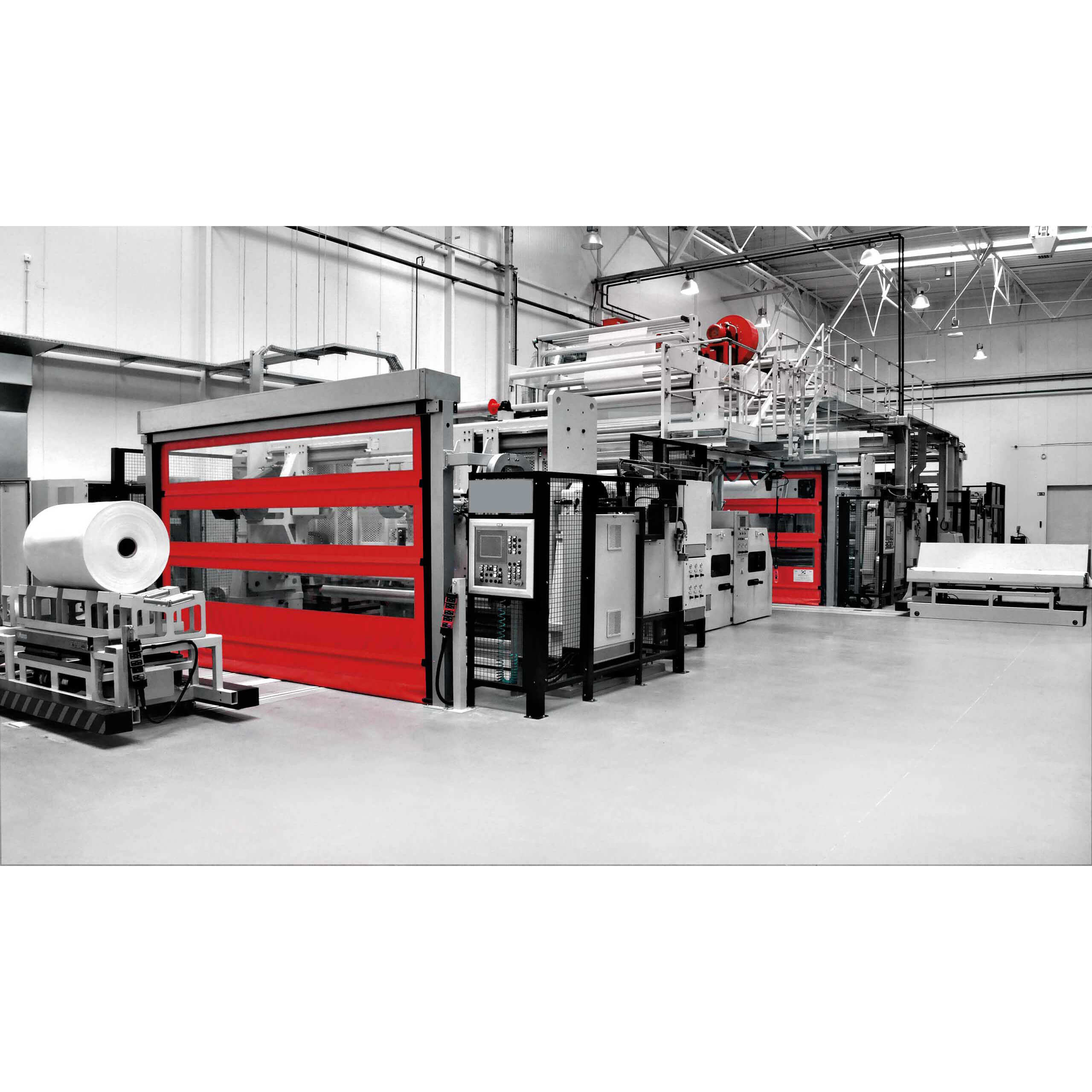6-20 个字符(仅限字母加数字)
密码不一致


The Essential Guide to Protective Film Laminating Machines
If you're working in manufacturing or any industry that involves packaging, electronics, automotive parts, or even consumer goods, you've probably come across a protective film laminating machine. But if you're new to the technology, or maybe you're considering upgrading your current system, it’s essential to understand what these machines do, how they work, and why they are so vital for your business.
As someone who’s spent years in the manufacturing industry, I can tell you that a protective film laminating machine is not just a luxury—it's a necessity. In this guide, we’ll dive into what these machines are, where they’re used, and why they can be a game-changer for your business.
What is a Protective Film Laminating Machine?
At its core, a protective film laminating machine applies a thin layer of protective film to the surface of various materials, including metals, plastics, glass, and even electronics. The purpose? To safeguard against scratches, dirt, moisture, and even UV damage. Imagine you’re shipping hundreds of delicate smartphones or touchscreen devices across the country—without a protective film, the risk of damage is high. The laminating machine steps in to protect the surface until your product reaches its destination.
I’ve seen firsthand how essential this process is. A few years back, we had an issue with damaged smartphone screens due to shipping. After we invested in a laminating system, the number of returns dropped significantly. The difference was night and day.
How Does a Protective Film Laminating Machine Work?
The process is pretty straightforward once you understand it. The machine feeds the protective film (often a plastic or adhesive-based sheet) over the material surface. Then, the film is pressed or bonded through heat, pressure, or both, ensuring that the protection layer stays put. Depending on your production needs, some machines can handle materials in continuous rolls, while others work better with individual sheets.
There are a couple of key components involved:
- Film Feeding Mechanism: This is where the protective film is loaded onto the machine.
- Heat/Pressure Application: The machine uses either heat or pressure (sometimes both) to ensure that the film adheres properly to the surface.
- Final Product: Once the lamination is complete, the product comes out protected and ready for shipping or further processing.
Key Applications in Various Industries
Electronics:
One of the biggest industries that rely on protective film laminating machines is electronics. Touchscreens, delicate circuit boards, and phone screens all require protection during transport and assembly. If you've ever had a phone or tablet arrive with a scratched screen, you can imagine how critical this protection is.
In the electronics industry, it’s not just about aesthetics. Scratches and scuffs on a display can affect its functionality. I remember a time when our company had a shipment of smartphones damaged in transit due to improper protection. We quickly integrated film lamination into our process, and since then, we’ve avoided costly product returns.
Automotive:
In the automotive sector, particularly when manufacturing body panels or even interior components, a protective film helps shield these products from dirt, scratches, and even chemical exposure during manufacturing and shipping. The film ensures that the parts arrive at the customer or the assembly line looking pristine.
Packaging:
Packaging materials also benefit from film lamination. The protection ensures that food items, consumer goods, and industrial products maintain their quality during handling and transport. I’ve worked on projects where protective film laminated packaging extended shelf life and improved product presentation.
Types of Protective Film Laminating Machines
Cold Lamination Machines
Cold lamination machines are used when materials are sensitive to heat. These machines apply the film using pressure instead of heat. They are ideal for delicate surfaces like paper or vinyl, where high temperatures could cause damage. If you're laminating a product that needs to retain its original texture or color, cold lamination might be your best choice.
Hot Lamination Machines
Hot lamination machines apply heat to bond the film to the material. This is perfect for tougher applications, such as laminated metal or heavy-duty plastic surfaces. A good example of this would be the automotive industry, where heat is required to activate the adhesive on the film.
Roll-to-Roll vs. Sheet-to-Sheet Machines
Roll-to-roll machines are ideal for continuous, large-volume production. They handle long rolls of material, feeding them into the machine for lamination. Sheet-to-sheet machines, on the other hand, are better for smaller production runs, where individual sheets are processed one at a time.
I’ve worked with both types, and choosing between them often comes down to the size of your operation. For large-scale operations, roll-to-roll can be more efficient, while sheet-to-sheet is often preferred for more specialized, custom projects.
Manual vs. Automatic
Manual machines require more operator involvement, whereas automatic models are designed to handle the entire lamination process with minimal intervention. Automated machines usually come with more precise controls, making them suitable for high-volume applications where consistency is crucial.
Factors to Consider When Choosing a Laminating Machine
Speed and Efficiency:
If your production process is fast-paced, the last thing you need is a bottleneck caused by slow lamination speeds. It’s crucial to choose a machine that aligns with your production capacity and speed requirements. Fast throughput can significantly reduce costs in high-volume environments, and trust me, time is money in this industry.
Material Compatibility:
Not all materials are created equal. You need to ensure that the laminating machine you choose is compatible with the specific materials you're working with. For example, if you’re dealing with high-temperature plastics or metals, you’ll need a machine capable of handling those without compromising the integrity of the material.
Customization and Flexibility:
Laminating technology is constantly evolving, and your machine should be able to adapt to future needs. Look for machines that offer flexibility—whether that’s in the types of films they can use or the ability to switch between hot and cold lamination. It’s not about just meeting today’s needs but also positioning yourself for tomorrow's challenges.
Cost vs. Quality:
It’s tempting to cut corners and opt for the cheapest machine, but quality should never be compromised, especially when you’re dealing with high-value products. A well-made laminating machine can save you money in the long run by reducing maintenance costs and improving the quality of your finished products.
Maintenance and Troubleshooting
Regular Maintenance Tips:
Keeping your laminating machine in top shape is key to minimizing downtime and maintaining production quality. Here’s what I’ve learned:
- Keep it clean: Dust and debris can cause jams and film misalignment, so regular cleaning is a must.
- Check the rollers: Make sure the rollers are free of scratches, and lubricate them as needed.
- Inspect for wear and tear: Over time, parts like heat elements or pressure plates can wear out. Regularly inspect and replace them before they cause issues.
Common Issues and Solutions:
One common problem I’ve encountered is film misalignment. It’s a frustrating issue that can affect both efficiency and the quality of your lamination. Usually, the issue lies in improper film feeding or poor tension control. Another issue is adhesive problems, where the film may not stick properly. This often happens due to incorrect temperature or pressure settings, so it’s important to calibrate your machine regularly.
Choosing the Right Manufacturer and Supplier
When investing in a protective film laminating machine, choosing the right supplier is just as important as choosing the right machine. Reputation matters. Make sure to do your due diligence—look for manufacturers with a proven track record, good customer service, and high-quality products. Don’t hesitate to ask for references or case studies from other customers in your industry.
Future Trends in Protective Film Laminating Technology
The world of laminating technology is evolving rapidly. Here are some trends to watch out for:
Innovation in Film Materials:
With sustainability on everyone’s mind, more companies are turning to eco-friendly, biodegradable, and even reusable film options. This trend is likely to grow, so staying ahead of the curve by investing in technology that can handle new materials will benefit your business in the long run.
Automation and AI:
As AI becomes more integrated into manufacturing, expect to see laminating machines with smarter features—machines that adjust settings automatically for optimal lamination, detect defects, and even predict maintenance needs before they become a problem.
Conclusion
A Protective Film Laminating Machine is no longer just a nice-to-have tool; it’s essential for maintaining the quality and integrity of your products during production and transport. Whether you're in electronics, automotive, or packaging, these machines help ensure that your goods arrive in perfect condition, minimizing returns and complaints. Take the time to assess your needs, and choose a laminating machine that’s up to the task.
Investing in the right technology, and maintaining it properly, will keep your production running smoothly and efficiently, saving time and money in the long run.

